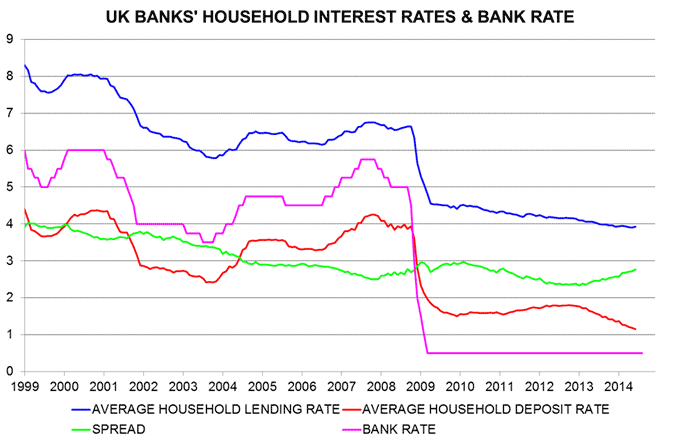The average interest rate on the stock of UK bank lending to households rose marginally from 3.91% in May to 3.93% in June, while the average rate on household deposits eased from 1.19% to 1.15%* – see first chart. The lending / deposit rate spread, therefore, widened to 2.77 percentage points – the largest since February 2011.
While the lending rate has stabilised recently, it has fallen since late 2012; the deposit rate, however, has declined by more. The combined household interest rate, i.e. an average of the lending and deposit rates, is 0.42 percentage points (pp) lower than at end-2012 – second chart. The level of the combined rate at end-2012 was sufficiently stimulatory to generate strong growth and a rapid erosion of economic slack in 2013. The fall since then represents an unwarranted additional loosening of monetary conditions – see previous post for more discussion.
The further decline in the deposit rate has contributed to continued rapid narrow money expansion. Non-financial M1** rose by 5.1% in the six months to June, or 10.4% annualised – third chart. Narrow money correctly signalled economic strength in 2013 and the first half of 2014; current buoyancy suggests that growth will remain robust and may even rise further during the second half, contrary to MPC and consensus expectations.
*Lending / deposit rates on outstanding stocks estimated from Bank of England rate / volume data for different types of business.
**Notes / coin and sterling sight deposits held by households and private non-financial corporations.


